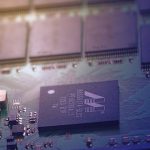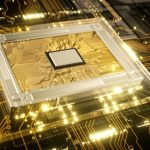Robotics continues to push the boundaries of innovation with TRON1, a bipedal robot from LimX Dynamics. With its two-legged design reminiscent of the AT-ST walker from Star Wars, TRON1 is drawing attention at the International Conference on Robotics and Automation (ICRA) in Atlanta. As a testament to its cutting-edge technology, LimX Dynamics has been focusing on equipping this robot for research purposes, aiming to venture into artificial general intelligence (AGI). The Shenzhen-based company, founded in 2005, highlights TRON1’s potential in the realm of robotics with its multifunctional capabilities that cater to diverse research needs.
In the past few years, robotic technology has witnessed a surge in multifunctionality and adaptability. LimX Dynamics with its TRON1 platform reflects these trends, offering a versatile research tool. Previously, the industry saw single-purpose robotic implementations, whereas TRON1 demonstrates a shift towards adaptable designs. Its recognition with the 2025 RBR50 Robotics Innovation Award mirrors this evolutionary trend in robotic capabilities. LimX Dynamics’ focus on multi-modal locomotion has further positioned TRON1 as a desirable tool for advanced research applications.
What are the features of TRON1?
TRON1 boasts modular characteristics, providing various expansion possibilities. With an expansion kit available, researchers can now equip the robot with a single arm, designed to enhance its research application versatility. According to LimX Dynamics, this setup facilitates the exploration of mobile operation, whole-body control, and motion planning. The company’s commitment to offering a ready-to-use platform at a relatively low cost makes TRON1 an attractive option for research laboratories focusing on humanoid embodiment and AI development.
How does the modular design benefit users?
The modular design of TRON1 allows users to integrate various technological modules, such as the NVIDIA NX high computing module. This feature supports advanced computing capabilities, including voice control and interactions, thereby boosting the robot’s anthropomorphic qualities and adaptability to different scenarios. Such flexibility ensures TRON1 is not only ready for immediate use but is also adaptable for educational and interactive upgrades, enhancing overall functionality in human-machine interaction and navigation.
What additional technologies does TRON1 support?
Beyond arm modules and computing capabilities, TRON1 can be equipped with lidar and depth cameras to enhance its functionality further. These tools optimize the robot’s field of view and support scientific research applications such as 3D mapping, dynamic obstacle avoidance, and navigation. LimX Dynamics has designed these features to provide out-of-the-box solutions, simplifying research processes and expanding the robot’s use cases in scientific environments.
TRON1’s development signifies a pivotal moment for robotics research platforms, emphasizing modularity and adaptability. With its comprehensive features facilitating various research domains, TRON1 might inspire future designs prioritizing flexibility in robotics. Researchers and developers will find the robot’s advanced capabilities particularly beneficial in fields like AI and navigation. As enhancing artificial intelligence remains a key focus, TRON1 undoubtedly serves as a valuable tool in progressing towards more sophisticated robotic applications.










